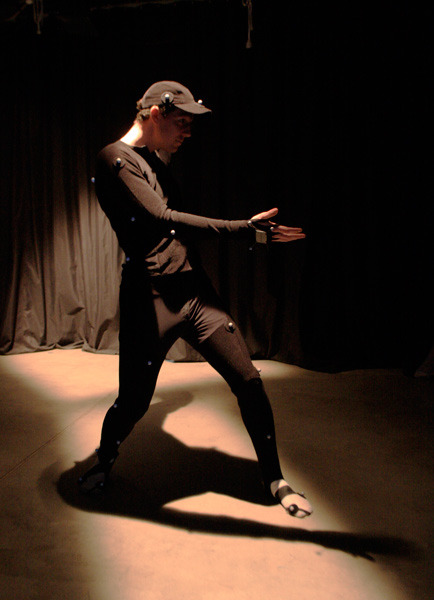Members of the 3D Imaging and 3D Animation courses (ARTD 471 & 472) have a new tool at their fingertips. Starting this term, we have a motion capture system set up on our Eugene campus. The technology, most often used for 3D character animation and in the video gaming industry, works by recording 34 points on the human body from 8 different cameras, and at 100 frames per second per camera. Through careful data analysis, each captured segment of motion is then converted from millions of X/Y/Z data into a 3D skeleton. This moving skeleton can be attached to 3D characters that students in the class are making, so the real human motion-capture movement is carried out in a virtual 3D body.

3D student Brett Cicarello suits up for a motion capture session.
Though this technique is heavily used in the entertainment industry, the powerful tool can also be used for creative experimentation and technological re-purposing. For example, can you image the human body as a digital synthesizer? Or could the motion of a body be tethered to something otherwise ephemeral, such as a cloud or a digital sculpture? There are many possibilities and we are ready to explore them.

The 3D skeleton imports into 3D Software (Blender 3D) as a skeleton.
Currently John Park (Digital Arts faculty) is also crating works with this tool on conjunction with dancers and electronic musicians as a way to press the tool usage out of industry and into creative practice. This work is being carried out by the art collective Harmonic Laboratory.
To get a sense of the fluid motion capture, here are some videos of capture sessions:
And another…